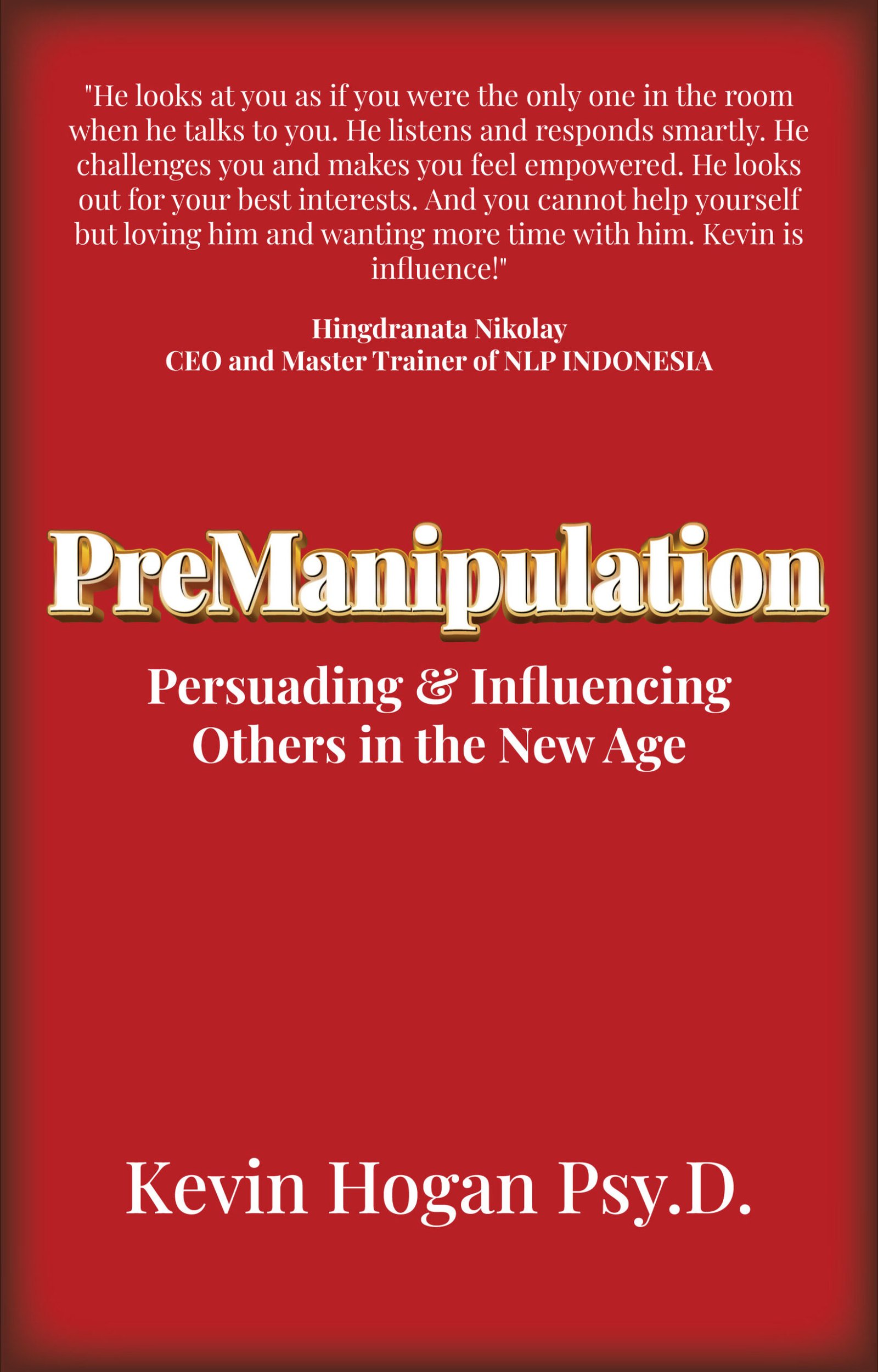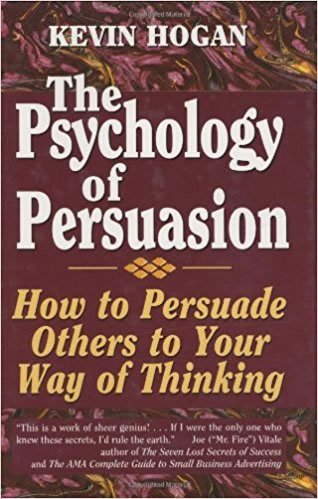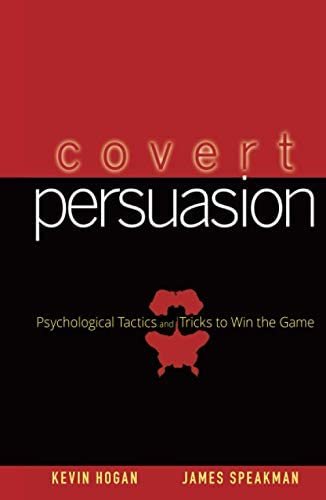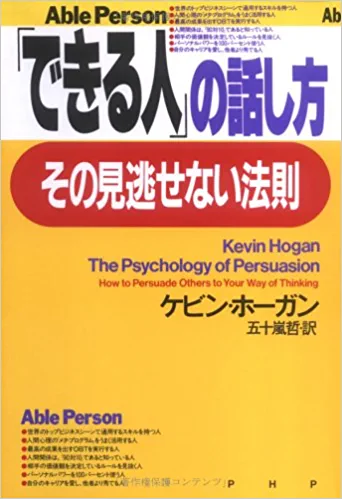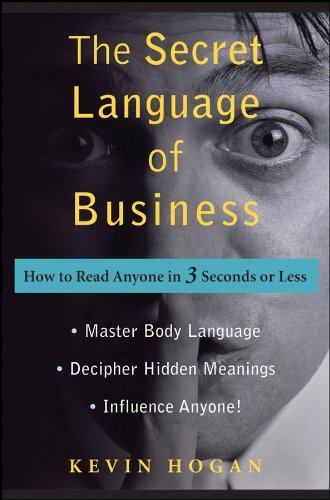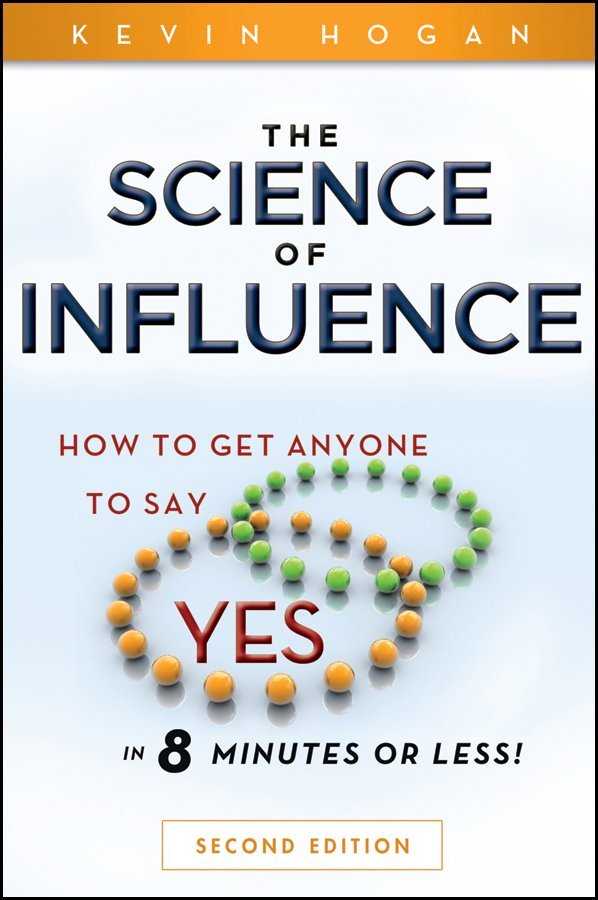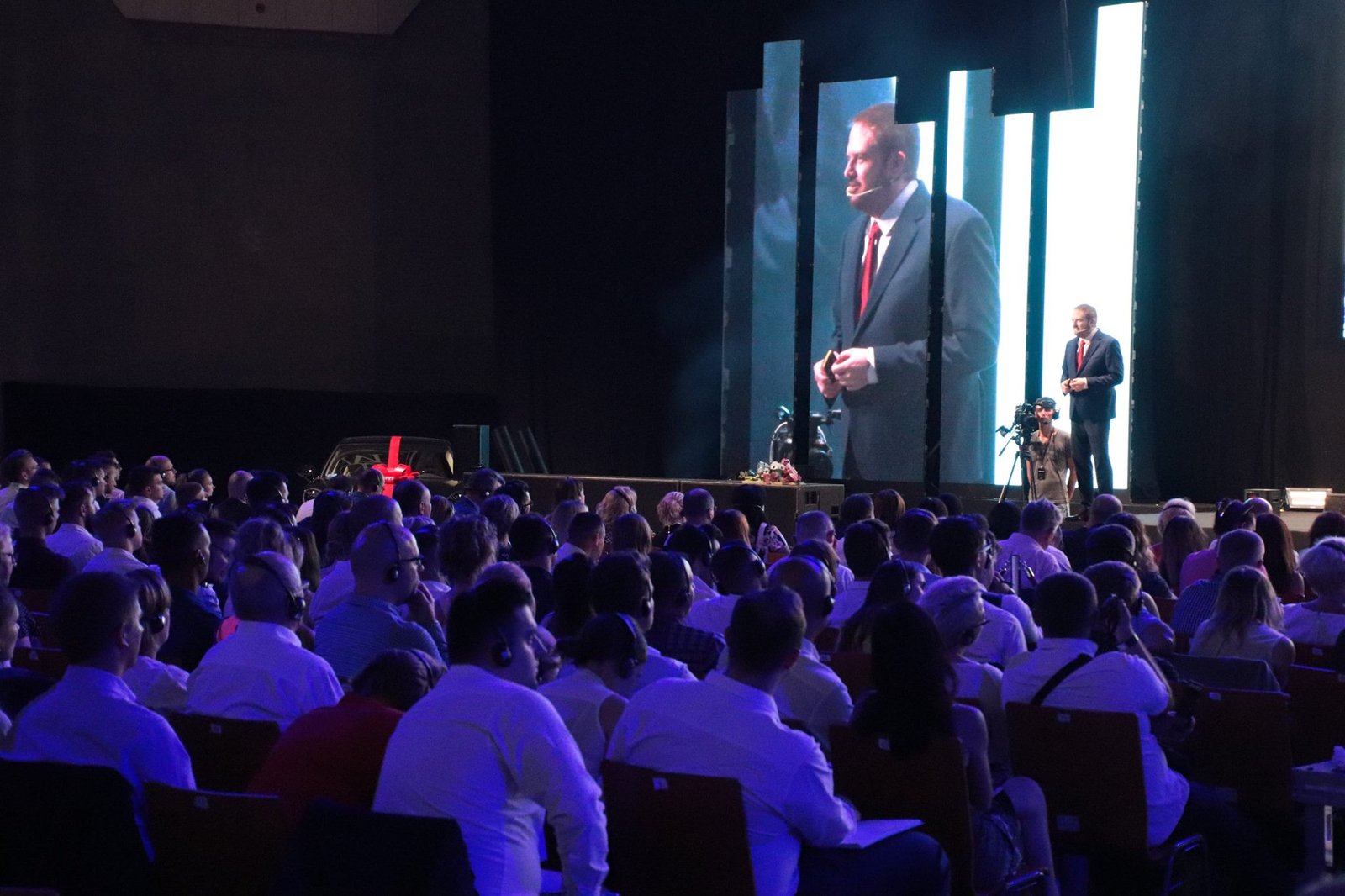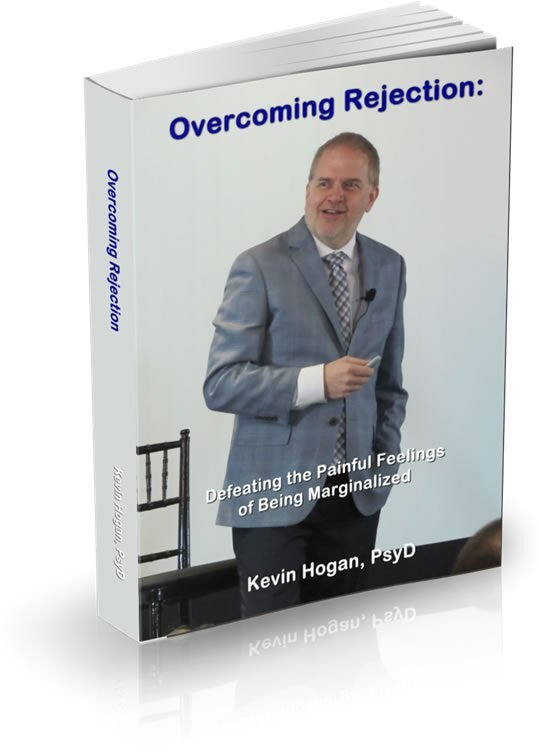Part Three in a Series
Read Part 2.
 At the end of last week’s article, we had just begun an examination of how stalking and loving come directly from the same emotional driver.
At the end of last week’s article, we had just begun an examination of how stalking and loving come directly from the same emotional driver.
A man had found a certain woman “collectible” and he tried to collect her.
We know just where this case will shortly be headed – to the judge!
Imagine the judge issues a court order. Stop. Restrain yourself. That automatically turns the subroutine off, correct?
Better yet, the individual is threatened by the girl’s boyfriend or husband. That turns the subroutine off, right?
You know better.
In both cases, different subroutines will be switched on. And that might counteract the restraining order of the man who has currently collected his girlfriend. (By the way, he did it precisely the same way as the stalker.)
It’s very possible that the subroutine that comes from the Vengeance driver is switched up by, say, the judge, and the individual will act in spite of the order.
It’s also possible the Vengeance driver and the driver of Flight/Fight will be activated and direct the behavior of the individual. The Belonging Driver doesn’t really get shut off. It often, but not always, will literally last forever, which is why there is classmates.com.
And when a driver is inhibited, it easily can trigger other drivers to activate, which can have any combination of effects on the individual. What happens when a Belonging Driver can’t bring that person to interact with the person they want to belong to? It stalks. But stalking is nothing. Now the triggered driver becomes The Vengeance Driver.
Will Dead Do It?
Elvis Presley and John Lennon both sang songs with the line, “I’d rather see you dead little girl than to be with another man.” Both songs were pretty big hits.
Seems like a pretty nasty line until you look at all the drivers and see that it expresses precisely the processes that go into the mix.
The Stalking/Love driver of Acceptance/Belonging has simple rules. It collects people and they can’t leave. The collected people can’t die. The collected people can’t get divorced. The collected people can’t go AWOL. They can only stay collected.
 If the other person doesn’t stay collected, the driver has to go back to work to re-collect the other person.
If the other person doesn’t stay collected, the driver has to go back to work to re-collect the other person.
Hopefully, it will be a simple act, as the Belonging driver and it’s subroutines are tenacious and require a great deal of energy to run.
Obviously, this is what leads to stalking behavior.
The problem with the other person leaving instead of dying is simple. The driver can’t reach the other person if they leave, but the subroutine has data that the person who left is still available/living.
Meanwhile, the subroutine will still go search out the person who has died and will do so for quite some time. The subroutine will squirt images of the other person into consciousness day and night, awake and sleeping, until it gets the person recollected. Subroutines don’t “understand” anything, they simply switch on and off. The subroutine won’t be able to collect the person who is deceased though it’s certainly possible the individual will create a delusional situation where they can talk to the person or see them in some non-local fashion.
That aside, the subroutine has the sole job of collection and recollection.
Behavior triggers …
Death or abandonment, as hard as it is for the person who remains, is nothing compared to the person who has been left.
 Depending on the actual intensity of the drivers of Belonging and Acquisition, the death or loss of an individual can simply be the same as having a mosquito being swatted or as profound as having lost an arm, a leg, or something even more valuable.
Depending on the actual intensity of the drivers of Belonging and Acquisition, the death or loss of an individual can simply be the same as having a mosquito being swatted or as profound as having lost an arm, a leg, or something even more valuable.
People who have Belonging/Acceptance and Acquisition drivers that are not intense will simply not experience the “loss” of someone as profoundly or with the ramifications of someone who is driven by Belonging and Acquisition. It appears that they don’t care. And, for the most part that is correct. They don’t care as much.
Acquisition is the driver of collecting, storing, saving, accumulating. People with intense Acquisition drives collect people and stuff in the same way the Belonging driver will seek to belong to many other people or groups or with great intensity toward a group or another person.
Because the behavioral manifestations are often similar, it is possible there is overlap in the genes that trigger the collection of people and want to belong to collections of people…and…those genes that are programmed to cause squirrel-like behavior in individuals.
Behavior is Triggered
Squirrels are smart creatures. They store nuts, make it through the Minnesota winter and shake their heads as their fellow animal friends don’t. The drive to acquire will often save, and predictably extend your life.
So Elvis and John sing, “I’d rather see you dead little girl than to be with another man.” Everyone listening to that can identify with the notion at some level of intensity.
It can run from, “well of course,” to “well, no but I understand why he might say that.”
When the answer wasn’t death, subroutines turned their attention to the other man and oh my, does that create a problem.
The Belonging Driver and the Acquisition Driver set their respective subroutines in motion to reacquire. It’s not at “all cost,” it’s simply its job UNTIL it is accomplished. It’s a virus scan. It scans, then deletes the bad stuff and then it shuts off.
But the departure of the individual to the other man wakes up other drivers.
Status and Vengeance Drivers
The Status driver, for example, could easily be triggered.
The status driver can be a powerful driver of human behavior. If the individual has an intense desire for status, the beloved person now left has reduced the status of the individual. That means the subroutine in charge of achieving Status must regain status. That can play out in a lot of ways.
Collect a better piece or re-collect what has been lost. Status can’t be lowered for long without dramatic change.
The Vengeance driver is perhaps instantly triggered.
Vengeance is all about justice, getting even, competing to win, killing when necessary. The brain here squirts the mind with images of killing the departed…to make them permanently departed…but also to kill the alternate choice.
We know from research that women tend to take vengeance, on average, just as often, but generally in less extreme actions than do men. But don’t think a woman can’t take a life. That could be quite an error.
The Vengeance Driver squirts all kinds of intense images into the mind. It’s hard to imagine a driver that is more powerful in taking a human from any point A to any point B. In other words, someone with a strong Vengeance driver is likely to be successful at what they set out to do.
Revenge, Justice/Injustice are powerful motivators IF the vengeance drive is tuned up in that 10 range.
What’s the greatest motivator? …
We’ve known for years that pain is a much greater motivator than pleasure in the vast majority of life situations. This is true in part because of the vengeance driver.
 Pleasure is sought after. With vengeance, the competition can be eliminated right along with the trophy.
Pleasure is sought after. With vengeance, the competition can be eliminated right along with the trophy.
The Vengeance Driver has no equal in force of drive when it is turned up. Research is abundant. People will punish the most minor of injustices with a fierce fury.
When you see successful people, you can know without question that their vengeance driver setting is up in that 8 – 9 – 10 range. In general, whether it’s the Olympics, athletes, actors – the people who are the very best at what they do, they are competitive to win. These people will continue until they win.
Meanwhile, the person whose Vengeance driver is a resting 1 – 2 – 3, they will wonder what the fuss is all about. Why keep score? It’s the playing the game that’s fun. It’s the spirit of the game that matters.
But not to the person with the intense Vengeance drive. For this person, “I’d rather see you dead little girl than to be with another man.”
Our New Perspective
Now, we’ve taken a quick look at a few of the drivers in just a little more depth than we have previously. Now, when you say words like “happiness,” “love,” and “peaceful,” you gain a new perspective on just what those words might actually mean inside of different people.
“Happiness” to a person that has a high Belonging drive is obviously going to understand “happiness” to be something very different than someone who has a high Vengeance drive. The person with the high vengeance drive is happy when there is justice for all.
3+ Core Drivers
And, of course, always remember that people have generally 3 or 4 powerful drivers in their behavior. Some people have 5 or 6, which can cause extreme behaviors, including extreme success and/or extreme failure. Certainly, you will see extreme passion in these individuals.
The drivers reveal precisely what a person will do by default in just about any situation. The drivers tell you genetic programming. This doesn’t mean the programming won’t be consciously overwritten in the moment. The person can easily surprise themselves and defy prediction through self-regulation.
A New Look at Self-Regulation
Self regulation simply means the person will control their desires. Lots of people can control their behavior…today. But for 10 consecutive days? Perhaps 1 in 10 can pull that off.
In general, most people have very little ability to self regulate over time. Drivers that cause the development of subroutines are simply too strong to consistently overcome for most weak-willed humans.
 You don’t need tarot cards to read a person’s future. You don’t need astrology. If you have their drivers, you have almost everything you need.
You don’t need tarot cards to read a person’s future. You don’t need astrology. If you have their drivers, you have almost everything you need.
As you learn to walk through the drivers that are moving someone right now and know which drivers will be strong enough to squelch or turn the weaker drivers off, you can quite easily predict with remarkable accuracy what people will do.
If you can predict, you can persuade.
Prediction means you know, almost certainly, what the person will do.
Persuasion means you can push the buttons so the drivers realign into a pattern that allows for a successful approach in an influence attempt.
The drawbacks of knowing this information? …
Warning: Be Aware of Ramifications
 Successful persuasion has drawbacks. It has problems. It’s one of the reasons why I don’t spend a lot of my time persuading others on most subjects/things in life. Causing a person to do X has ramifications.
Successful persuasion has drawbacks. It has problems. It’s one of the reasons why I don’t spend a lot of my time persuading others on most subjects/things in life. Causing a person to do X has ramifications.
Causing a person to do X is actually not difficult once you know how to predict and direct what is squirting into another person’s brain. But, remember that there was a subroutine that wasn’t very happy with the friend who wanted the individual to lose 150 pounds and then successfully accomplished that outcome.
You can persuade anyone when you understand their drivers. You can also recognize that most of the time, you probably don’t want to do so. How you cause change to come about will determine whether there will be blowback (unintended consequences) or not.
You can have almost no blowback if the OTHER PERSON asks YOU to change their behavior for them or with them. (It really doesn’t matter which.) But if YOU suggest the change, YOU trigger dormant subroutines. You might still be successful at convincing and gaining compliance, but you can then anticipate blowback. You can ALWAYS anticipate a greater amount of blowback than anyone else in the world would have guessed.
There is much truth in, “No good deed goes unpunished.”
It’s a broad generalization, and although it is certainly not universally true, you can generally know that if the intervention was your idea and not the other person’s, there will be blowback.
The Ease of Persuasion
Wiring into people’s drives is as easy as asking a question. Persuading is often no more difficult than waiting for the answer to that question. More often the person being persuaded says nothing. They simply go forth and do what you persuaded them to do.
Of course, that question is easily muted by any of a few dozen factors that can trigger subroutine defenses.
A Look At Persuasion From the Other Side
Let’s look at yet another set of scenarios (from the part of someone being sold) and see precisely how drivers and their subroutines will allow or stop influence.
Some years ago I was a Seventh Day Adventist. I didn’t eat pork, lobster, crab. Sundown Friday to Sundown Saturday was Sabbath and to think of doing anything other than “rest,” would have been ridiculous. (This is a very strong Belonging driver.)
Imagine I was sitting down for dinner on a weeknight with a salesperson and they were hoping to gain me as a client for life insurance or to invest in their hedge fund.
The evening could be going along quite pleasantly when the server comes over. I order a veggie dish or perhaps steak. He orders lobster. If I were on the fence or even most of the way to saying “yes,” it’s quite possible that the order for lobster would trigger any of a number of drivers that would make the sale difficult as I might have been compelled to leave. Hanging around with people who were “dancing with the devil” was something I rarely did. The group I strongly Belonged to did not approved of shellfish.
 Similarly, in the same context, he could be attempting to discuss finalizing the contract at my home on Friday night or Saturday. That certainly would have raised all kinds of walls, causing resistance and perhaps losing him a sale.
Similarly, in the same context, he could be attempting to discuss finalizing the contract at my home on Friday night or Saturday. That certainly would have raised all kinds of walls, causing resistance and perhaps losing him a sale.
In that context and frame of mind, I’m a Christian with “values” that can’t be bent. (Still my Belonging driver is set in stone.)
Meanwhile, had the conversation been 10 years later I wouldn’t have been a member of the church, but switching the context, I certainly was close to being a Republican and two resonating identities could have triggered “yes” or “no” depending on the simple body language, tone of voice or phrasing he might have used in discussing the events of the day. (Strong Belonging driver, different group.)
The Intersection of Drivers & Beliefs
It’s commonly advised to not discuss politics or religion. That’s really not true for persuasion. A little knowledge can go a long way in connecting powerful drivers with beliefs. How?
The right way and the wrong way …
For example, as that “on the fence prospect,” I might feel no compulsion to do business with the man.
 But, if he were to state My Belief (or something very close) at the beginning of the Gulf War and he said something like, “Yes, Baghdad for two weeks, take out Saddam and get the boys home,” and if he said it as though it meant something to him at the level of moral principle – that moves the “yes” decision into handing me the pen seconds later. (Suddenly, we both Belong to the same collective.)
But, if he were to state My Belief (or something very close) at the beginning of the Gulf War and he said something like, “Yes, Baghdad for two weeks, take out Saddam and get the boys home,” and if he said it as though it meant something to him at the level of moral principle – that moves the “yes” decision into handing me the pen seconds later. (Suddenly, we both Belong to the same collective.)
What’s going on here?
I would be certain we belonged to the same subgroup. Our identity would be similar, and it would be hard to distrust his judgment with him fervently speaking my own viewpoint on an issue.
At that point knowing me…”Gimme the pen and let’s get out of here.”
No additional information would likely have been required. Being in subgroup means you identify with other people in the subgroup. Belonging is a potent driver and when I recognize I’ve collected a new person for my collection, it will be time to go. After all he has been collected. There’s nothing left to talk about.
At this point in the conversation, however, he can still screw it up.
Asking the Right Questions
“Don’t you agree, Kevin?”
(That turned “yes” into “no.”)
Why would he have to ask? He just fervently stated a position on an issue that matched my position and nothing anyone could say would move me off that position. He couldn’t need me to agree. Of course I agree. Asking all by itself would set off resistance and raise the walls.
What could he safely ask? “Hey, you think they’ll be coming home soon?”
Now, we have the same opinion on a very volatile social issue and he’s now yielding to my superior knowledge and status of opinion. That’s the proper use of the question.
Words, phrases, sentences, and ideas all kill persuasion attempts.
They can also yield “yes” or something similar.
Soft Discovery Follow Up Questions
Most people are driven to keep talking and communicating information. Asking soft discovery follow up questions is generally far more likely to bring about an ultimate “yes” to the reason for the dinner than just about anything else.
Discovery questions are questions you use to learn what someone believes or thinks about something. A fruitful discovery question is a non-personal discovery question. What will happen next in an event you care about but that exists outside of your home and your specific balance sheet.
“You think gold is a good buy today?”
“You think the stock market is too rich, Kev?”
“What do you figure will happen with oil prices?”
“You think they’ll actually pass a law to audit the Fed?”
These are soft discovery questions. He cares/is interested in the subject. Me, too. They are asked in follow up to either of us stating a mutual belief about something.
Notice he’s not asking about life insurance or my opinion about that.
Precision use of questions that lead to “yes!” …
Successful influence discussions generally aren’t about the reason you’ve met, they are about Identity.
Raising Flags
Watch:
“Don’t you agree that life insurance is a good investment?”
(Hell no, not in most cases.)
“Don’t you agree life insurance helps protect your family?”
(Sure but why are you asking me such a stupid question? You don’t know the answer to that?)
“Do you want the 20-year level premium or the 10-year level premium?”
(This dude was a good guy until he started using good old-fashioned first year alternate choice closes.)
Flags go up. Walls raise. He hasn’t lost the sale, but it’s an inch away. Flight/Fight has been switched up.
What Should He Do?
So what should he do? Remember, he’s just asked, “Hey, you think they’ll be coming home soon?”
I answer, “Nah, I think the War Machine has dug in over in Iraq. It’s the Return of Vietnam.”
He says, “Idiots.” He pauses for SEVERAL SECONDS. “I suspect you’re right… OK, Kev, here ya’ go.”
 He puts the paper in front of me and hands me the pen. I can do nothing but sign. He could say 100 different things that could lose the sale right now, and nothing could improve the odds of gaining the sale. I’m going to sign as long as he says nothing else. The water is 211 degrees and I am buying. One more degree and it will boil, the Flight/Fight trigger will kick in and I will be out of there.
He puts the paper in front of me and hands me the pen. I can do nothing but sign. He could say 100 different things that could lose the sale right now, and nothing could improve the odds of gaining the sale. I’m going to sign as long as he says nothing else. The water is 211 degrees and I am buying. One more degree and it will boil, the Flight/Fight trigger will kick in and I will be out of there.
I had long ago decided to buy what he’s offering. But, it was up to him to get me to buy from him.
What might really matter is whether I believe we are kindred spirits. I tend to do business with people I’m close to and trust. People I’ll have a long relationship with. You probably tend to do the same. Or would be wise to.
That’s not necessarily always true, but I rarely do business with someone who is a rookie or is trying to be like me for the purpose of manipulation. Faking to model what I believe is something a con man could do but doing it well enough to get past my rather well-honed BS Detector is not quite as likely.
And ultimately, I pick up the pen and I say, “What is this, a 10-year level premium?”
He says, “I put you in for 20. Inflation eventually hits and when it does, you’re paying nothing.”
I sign.
That’s influence.
It’s not typically about the contract. It’s more often about Identity when influence is effective.
What helps the process along is knowing how the drivers will impact people’s thinking and decision making.
Then asking questions that lead to a greater likelihood of compliance vs. questions that are more than likely to lead to resistance, walls up, and ultimately, “no.”
Before you open your mouth and utter one word…. Before your body language hits their nonconscious….
“Imagine…in Every Interaction in the Real World or Online, How Would Your Life Be Different If People Were Desperate to Instantly Say ‘Yes’ to You?”
Automatic Compliance is the stuff of science fiction. It simply sounds too good (too scary) to be true…
It seems instantly unreasonable that you could have the same (more precisely: similar) effect on that person… over there… as say, Angelina Jolie, Brad Pitt, or Kim Kardashian would.
Humans are neurobiologically wired to react INSTANTLY to TWO specific Flash Perceptions when they see anyone.
- Instant In-Group Recognition: Triggering, “All is Safe and Secure, Allow Entrance, Interactions Are to My Benefit.”
- Attractiveness: (which triggers one of these) “I want them. I want to be seen with them. I want to be seen and liked by them. I want to be near them. I want them to want to be near me.”
IF you don’t generate that instant flash, reactance and resistance occur and the most likely response is always. “No.”
Until TODAY, literally, no one has ever released a program, a book, a manual, a video…no one has shown you anything ever that, “generates the Automatic First Reaction of Certainty, which yields, “yes, come in, I am comfortable with you, I feel like I’ve known you forever and I’m open to pretty much anything.”
Why?
Because until the last decade there were 100 pieces of research about attractiveness and liking compared to every 1 piece of research on generating instant calm, security, comfort and connection.
In the last few years this has begun to change because of major technological advances in neurobiology and nonconscious and subliminal stimulation. Yet nothing shows the individual, the salesperson, sales letter writer, the marketer, even the PUA how to assemble The Five Elements into one workable easy to use method…The Persuasion Protocol.
The two nonconscious neural responses are DIFFERENT from each other. They accomplish the same crucial result. They open the door to agreement and compliance. The benefit of their certainty reaction is that it doesn’t operate if there is reactance or resistance. The negative reactant response is far and away the most common, and only attractiveness counters it in a fashion similar to that of certainty.
You’ll learn how that happens and how to make it real in the program.
Get Persuasion Protocol
For the first time ever, you are on the same playing field as the wickedly good looking guy or gal who gets the majority of the sales.
That was my goal in creating this program for you.
It has been accomplished….

The Persuasion Protocol
The Fifth Element
You’ve waited over one year for this and it has just arrived. You’ll understand the delay when you listen to the program. You’ll notice my voice “changes” within individual CD’s because I had a serious vocal cord problem and had to re-record many tracks so you wouldn’t think I was the bass singer in some musical group. I was only supposed to record short clips daily but that didn’t quite happen.
The Persuasion Protocol takes you through an elegant step-by-step method of gaining compliance from almost anyone you could ever imagine wanting to say “yes” to you. It’s unlike anything you’ve ever seen or experienced before.
Unlike any program ever developed in the field of influence and persuasion or selling, you will begin by making your Self almost impossible to say “no” to…you.
Persuasion begins before you walk in the door.
The actual process of persuasion begins long before you meet the girl or have an appointment with the buyer. Persuading those who come to your website begins before they arrive at your website.
“Are you talking about preparing for the sale? I know about that…”
….uh….no…that was 1997.
“Are you talking about making yourself look as attractive as you can?”
…again…no…no…no…The Persuasion Protocol transcends attractiveness.
But don’t get me wrong. If you look like Angelina or Brad….you will have a double advantage. If you are like anyone else, you simply have the only single advantage you would ever need or want.
The First Element
I’ve spent the last 17 months scouring crucial neuroscience research, poring through consumer, marketing and behavioral findings so that you can have a complete “package” that people instantly say “yes” to *before* that first impression.
Understand…while your mastery of body language and nonverbal communication are important, it is secondary and not as important by comparison to your preparing THEIR BRAIN to instantly opt to comply with you upon first sight and communication.
…sounds like magic to me…but I promise it’s not.
It’s also *not* instantly easy and “fast.” It IS something you can accomplish. It is something you MUST accomplish.
I’ll spare you the scientific jargon and say it this way:
People have prior experience with thousands of people. They have interactions with people who they live(d) with whom they have spent a great deal of time. Those experiences each are very different and when presented with a similar moment in time, the parts of the brain that reacted to similar situations in the past arise instantly in the present ready to solve the problems and fight the fights of the past.
And that is the problem.
Before people see you, your website, or even know you exist, they are 100% prepared for who you are *not* going to be after you have completed this program.
I’ve developed a very simple process that requires 19 days to complete. It will permanently change how people will react and respond to you in the situations they would have said, “no” in the past.
The problem you face is that people paint a picture of you as if you are a mirror reflection of their past experience.
Upon meeting you or arriving at your website, it is Mission Critical to have that reflection CHANGED to a picture of a gestalt of those they have complied with in the past.
This seemingly Herculean task, assuming they are undistracted, must take place in approximately one second.
The first two discs of this program cover quite a bit of persuasive territory. The first core experience is for you to intentionally create a few micro-tweaks in how you will trigger reactions in other people on sight and then later in conversation or in text.
Would people instantly react differently to you if they saw you as Brad Pitt, Lucy Pinder, Angelina Jolie, Kat Dennings, Jessica Alba?
It’s a different set of highways in the brain, but for the purpose of this moment, go with that.
Their brain is simply wired “this way.”
How?
They would be mentally prepared to comply or agree to pretty much anything you ask them.
Problem?
Yes.
I can’t make you look like Brad….I can’t make ME look like Brad…
Doesn’t matter.
There is another way…
This initial trigger is crucial or they will react to you in such a way that is similar to:
a) how you have triggered people in the past
b) how they have perceived people, now gestalted into “you,” in similar situations in the past…even if they’ve never met you, heard you speak, been to your website or had a clue you were alive.
I will show you *precisely* how to take the video recording of your life and change the few crucial pieces where other people were triggered to say “no” to you in such a way that those experiences are no longer reflected in your personality, persona, your face or even your body language. As you guessed, this has nothing to do with making changes in body language. This is changing a few tiny little pieces of you that trigger mirror neurons to react in others.
This is not a bogus NLP “technique” that never got tested. This shifting mechanism was trial and errored until the right solution was discovered in testing. In other words, this is real.
Where you currently have success in influencing others, you make no changes. In these situations your current beliefs, certainties and behaviors are already effective.
Where you haven’t been ideally successful with persuasion, you will excise a few pieces of your life video recording so that you send a custom designed message with greater likelihood for others to say “yes,” to you. Isolating the specific points to shift is not difficult and the process is fairly simple.
Warning: This is not like Instant Coffee. It takes effort. But, once the change is made, it’s permanent.
The result is that you’ll see most people and their likely response to you through a lens of high certainty and reduce internal triggers to move away from you to almost nil.
You now begin to shape all people who you come across in the way you choose instead of default, which is indeed a fault.
The Second Element
The Protocol for effective and rapid persuasion flows fluidly, easily and obviously to the Second Element.
Here you learn to control the time constructs each person has as it relates to their being persuaded by you. You must choose precisely when you are going to approach, meet, ask for the date or have people arrive at your website. The arrival time is crucial and you can pre-determine whether you are virtually certain to gain compliance or not quite easily BEFORE you enter their space.
The Second Element is not limited to “what time is it,” but “what day is it,” “what date is it,” “what month is it,” and how you account for the differences in how they will react to you on each of those specific days, hours, weeks and months. Once you learn to utilize this one very easy to grasp tool, you will never be seen quite the same.
Their reaction to you and their compliance or not, is much more than about your “first impression” or your what you say. It’s about a very specific individual with a specific mindset interacting with you at an absolutely optimum time.
I’ve left nothing to chance here. I’ve put the factors of the Second Element together into a template and laid it out for you for an hourly, daily, weekly and even monthly schedule of how to optimize all of your interactions with brilliant timing intention.
Get Persuasion Protocol
It’s here that you’ll be introduced to the unknown factor that stops persuasion cold and discover how to completely bypass it!
I’ve only shown three corporations how to do this. I’ve never trained it in Boot Camp. No one else has put this into interactions, sales, marketing…no one. This is brand new for you.
The Third Element
It is no coincidence that most of the successful online marketers have strong backgrounds in two specific and, frankly, not easy to master hypnosis models. Drawing from even simple but powerful hypnotic techniques has allowed marketers to target states of mind or subroutines within individuals to increase sales.
But before you can use these techniques, you have to learn how to cause someone to be in a specific state of mind. Random doesn’t work beyond random. Feeble attempts typically fail. Now you learn what…and how.
Different “sub-selves” (the actual neurobiological term) are activated in different environments and in the presence of different people. This is why it is CRITICAL to make instant shifts in environment, location, people and triggers in the environment a key factor in The Third Element of The Persuasion Protocol.
Equally as important is you being aware of how you are perceived at any moment of an interaction.

Running Their Brain and Shifting Their Selves
You can predict behavior when you recognize “the state,” the part, that is forward in their brain.
If your prediction is that compliance will fail, you CHANGE what part of them is forward until you can gain compliance.
The first state or part will likely be forward until the Passive Goal Guidance System has met a tiny goal and switches out. Now you learn how to optimize the use of anyone’s PGGS for Rapid Compliance.
The Fourth Element
Without question, the great marketing and sales discoveries of the last decade are those that give you applications to synchronize identities with another individual. This can be true in face to face communication, writing sales letters and direct mail…in fact…it’s applicable to texting and social media.
The Fourth Element is fusing bonds with their most secret identity.
Without question The Greatest Marketing Study Ever Done allows you to see the results of connecting with that hidden identity. Ironically, no one has even remotely heard of this study inside the world of salespeople and marketers. Strange that you’ll now possess the knowledge of what was discovered works in marketing…and what doesn’t…and specific implementation points for you.
50,000 people were involved in this study. A record. And you have the results.
The Fifth Element
Like the first four elements, The Fifth Element is new to your understanding of persuasion.
 Discovering and then shifting their Identification Protocol is something no one has talked about in the real world. The reason is that it’s one of those things no one wants to talk about. Causing people to do what you want to is very simple when you understand and work within their Identity as it intersects with yours.
Discovering and then shifting their Identification Protocol is something no one has talked about in the real world. The reason is that it’s one of those things no one wants to talk about. Causing people to do what you want to is very simple when you understand and work within their Identity as it intersects with yours.
The Emotional Shift Protocol
People’s bias toward certain behaviors is very predictable.
Example: The Optimistic individual meets their inner drive to maintain the Status Quo with behaviors that you can predict and control. These biases meet head on their bias toward over estimation creating frustration, anger and other emotions that can be remarkably valuable in the persuasion process if you know what to do with them…saving the best for last….
The Great 21st Century Influence Study(s) Results are Yours – No one Else has them….
The most important influence study of this century gives you specific actions to take to influence others. Then you learn precisely what not to do and how to use this in many different contexts. Absolutely brilliant in scope and magnitude with the side effect being that people report they don’t even remember what caused them to behave differently!
New Strategies Never Before Seen
This program is not only unique to my work but also to the field of influence, persuasion, sales and marketing. That means that for the most part, not only is this “new” but the interaction between the Five Elements is absolutely singular in power.
I guarantee you’ll be the first person (as will the others who get this program…it’s not really JUST you and me) to have this. It’s far beyond “cutting edge.”
Do PRECISELY what you are instructed to do in The Persuasion Protocol and you will own your Self and you will own their reaction and response to you.
It is difficult to construct scenarios where The Persuasion Protocol is ineffective because it was designed to loop to agreement. There is no real Test/Exit/Fail option in the system.
It’s simply the most potent information about persuasion ever prepared for anyone.
This doesn’t mean someone isn’t going to say “no” to you at some point. You might step over a line that someone else won’t ever cross under any circumstances. But because of the methodology, you wouldn’t go there in the first place because it offers a significantly possible response of “no.”
The program is a bit over 10 hours and uses 10 CD’s.
There is an extremely important 69 page Guide on CD as well. IF you do what is in the guide in ADDITION to what you learn in the CD’s, you’ll have a brilliant story to tell me the next time we see each other.
If you don’t use the manual with the CD’s at least ONCE you’ve missed the boat. There are actions you must take outside of your University on Wheels for this to all coalesce.
You can now pick up the program at a significantly reduced price and have the finest persuasion program ever developed. You’ll see your personal effectiveness, charisma, persona grow by leaps.
 Why do this?
Why do this?
The Persuasion Protocol is unique. You don’t have this. No one has this.
It will not be sold at a lower price at any point in the next several years. An opportunity to acquire the course at a lower cost in some future promotion this year will not happen.
Listen to The Persuasion Protocol as often as you can.
You’ll never have invested your dollars in such a profound fashion.
The ROI will occur as quickly as you choose it to happen.
Get Persuasion Protocol

